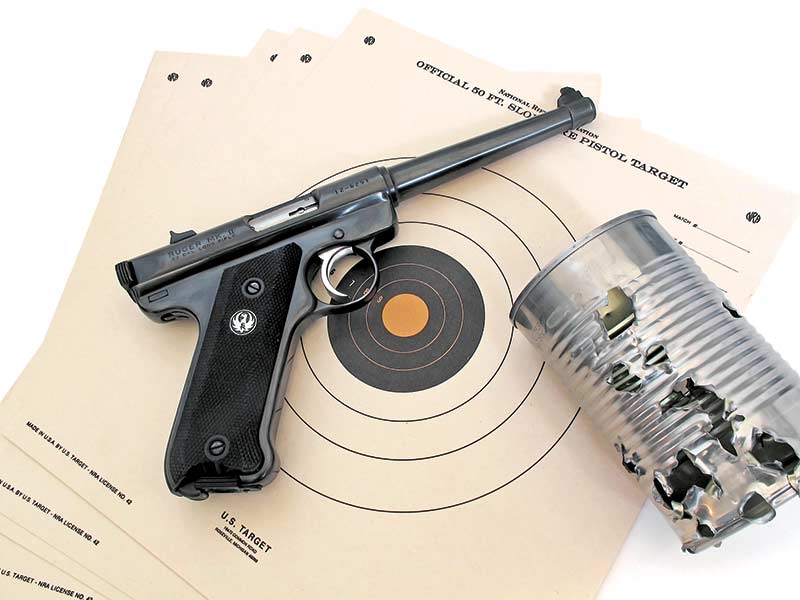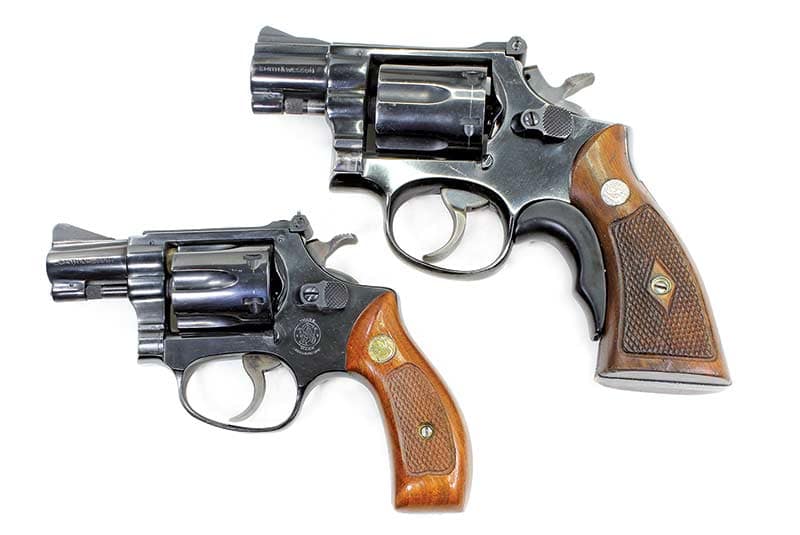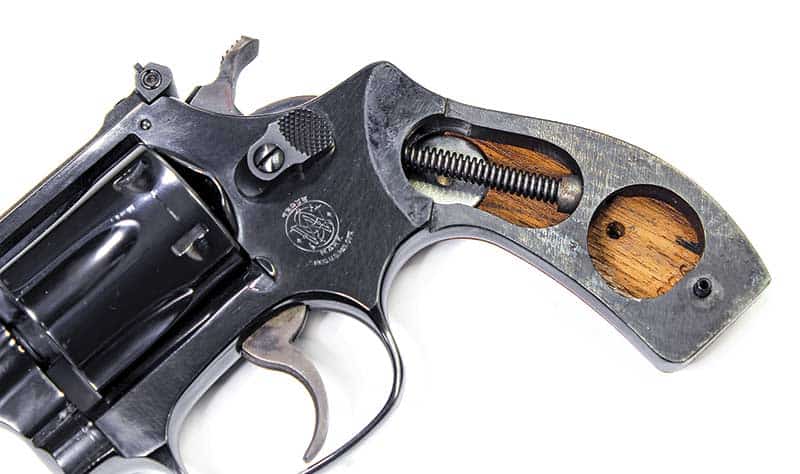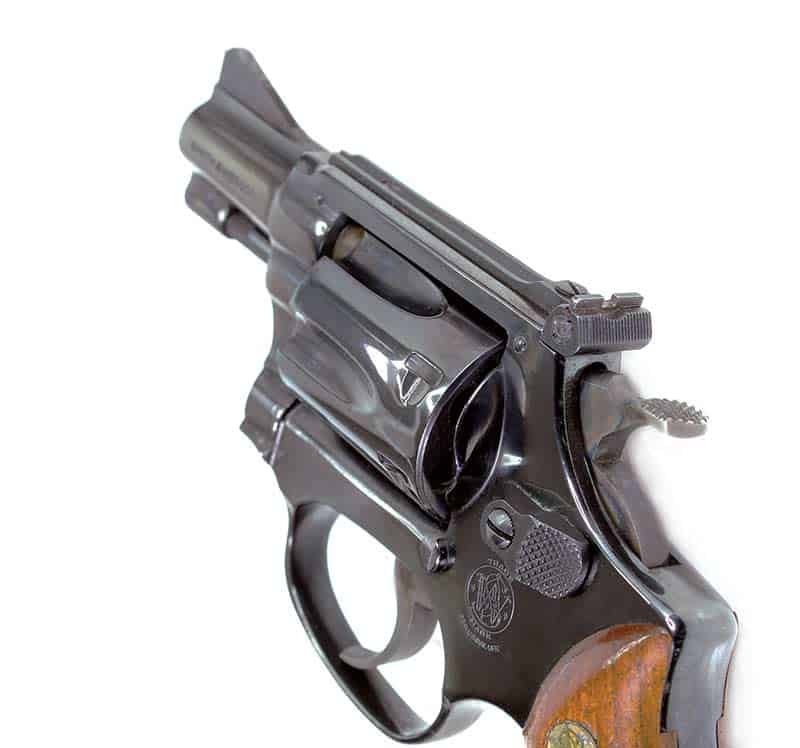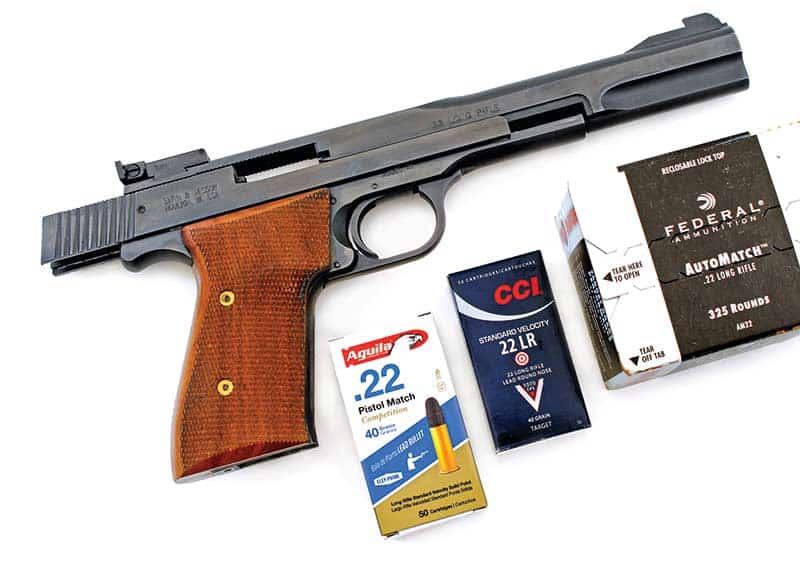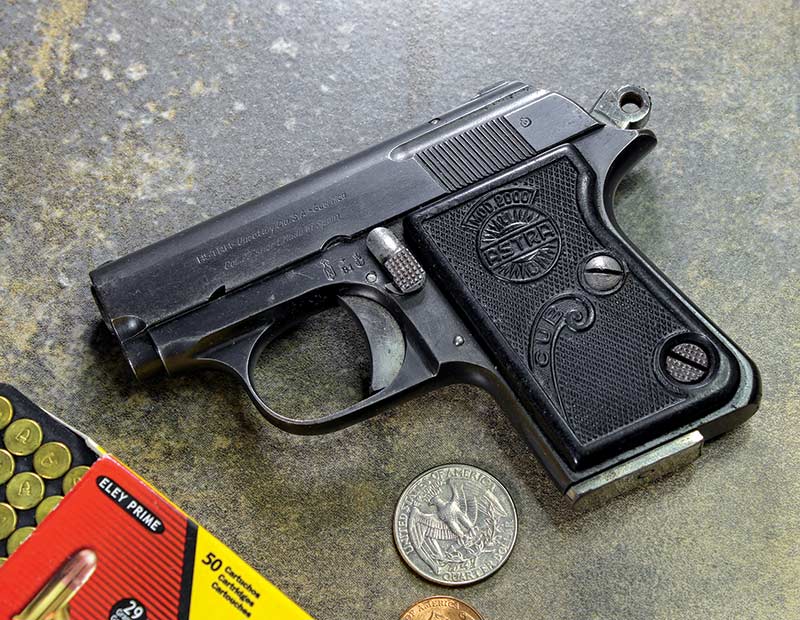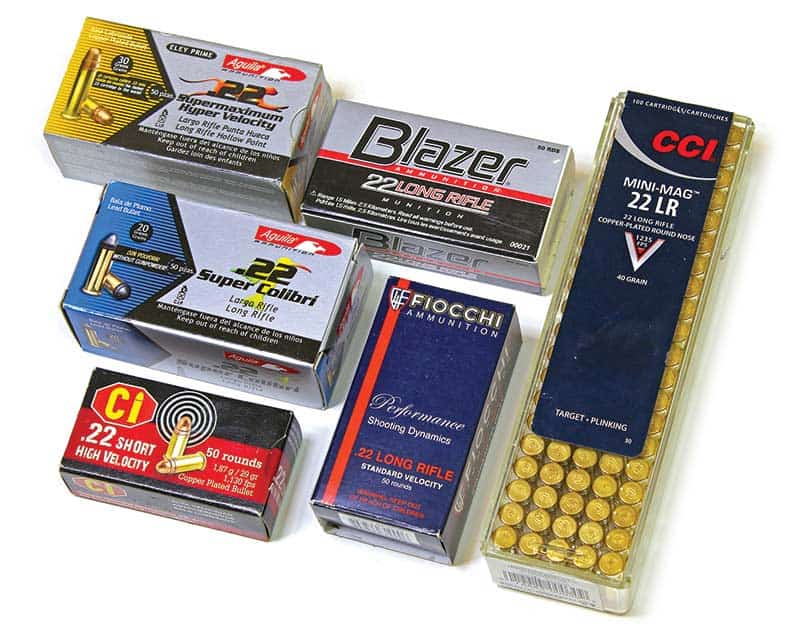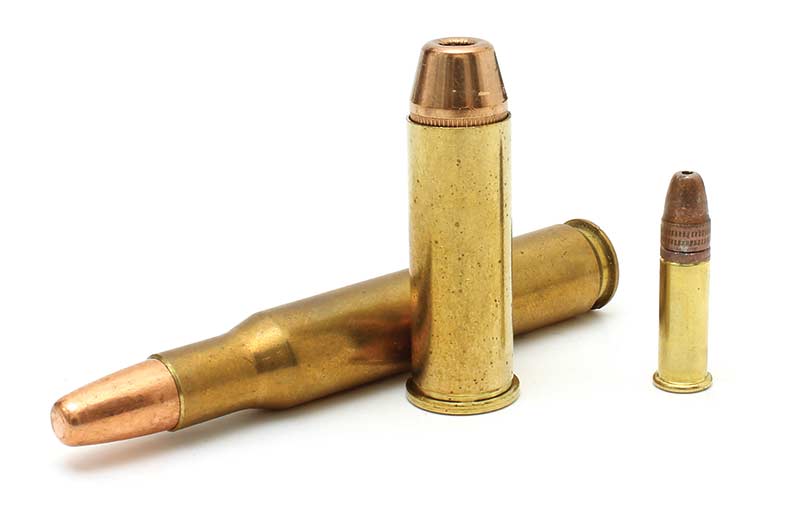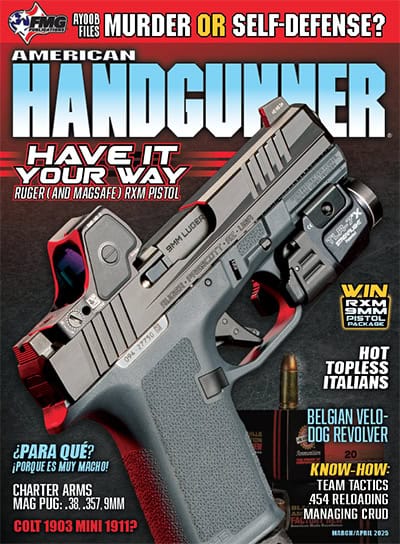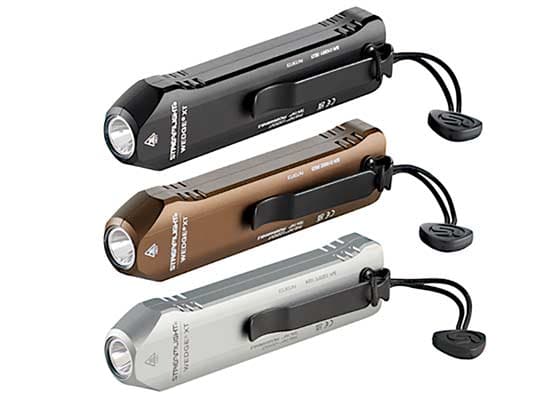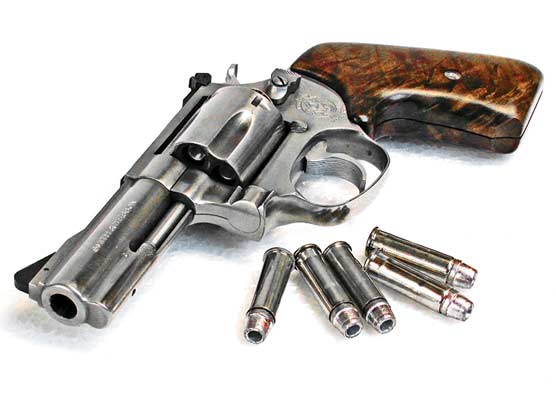3 Flavors of .22 Handguns
Rimfire Isn’t a One-Size-Fits-All Proposition!
If there’s one gripe I have with shooting culture in general, it’s that a great number of shooters tend to look down their nose at rimfire firearms. Some feel these aren’t “real guns,” especially when put in the category of 12-gauge shotguns, full-power hunting rifles, or magnum-caliber pistols. Others feel they’re junior-status firearms made to be outgrown: that the .22 under the family Christmas tree is just a hop, step and jump to a Remington 700. On no shortage of other occasions, I have been told by shooters they simply find .22s “boring” or that they simply make hitting a target “too easy.”
It would be an understatement to say I don’t share the same opinion: I own more .22-caliber firearms than anything else, and at least one always accompanies me to any range trip. Though everyone is entitled to their opinion, I take issue with people who tend to put every rimfire gun in the same general bucket of “just a .22.” Today, let’s look at three different designs that simply couldn’t be more different in terms of form, function and utility.
The S&W Model 34
For the longest time, S&W advertised their J-Frame rimfire revolvers as “kit guns.” The term didn’t mean you put them together yourself, but that they were small and handy enough to be thrown into any “kit” you might think of, like a fishing tackle box or saddle pouch. The idea was that if you needed a gun for an opportune shot on a random varmint, pest or to finish off wounded game, you’d have a tool with you for the job.
These days, most city ordinances take a dim view of taking a potshot at a random bird, snake, or squirrel you might be likely to encounter on your afternoon stroll, so the “Kit Gun” concept has become a little antiquated to anyone not sitting on acres of rural property. You’d be mistaken, however, if you thought such a gun didn’t have value even to a city slicker like me.
Simply put, the J-Frame .22 has tremendous worth as an understudy or trainer for the snub-nosed revolver. Despite the advances that have gone into making subcompact firearms smaller, lighter and more reliable than ever before, the snubbie will always find its way into pocket holsters by virtue of its reliability and simplicity.
Most owners will quickly realize that there is absolutely no handgun on the planet Earth that is harder to shoot. The snubbie is often saddled with the title of being a “belly gun” and nothing more, but it’s an unfair label: while stiff springs and even stiffer recoil are clear stumbling blocks, the lack of results on target is almost always due to operator error.
One of the primary challenges of mastering the snubbie is making peace with a 12+-lb. pull on a gun weighing only about 20-some oz. fully loaded. It is very easy to push the barrel to and fro, and yanking that trigger straight through will almost always result in a telltale miss.
What the Model 34 offers its users is the ability to really learn the double action trigger of a J-Frame, keeping the sights pointed on target (despite the short radius) and keeping the trigger moving deliberately and evenly until the shot breaks. It also is far easier to build this muscle memory with the stiff, unpleasant recoil of most snubbies decisively tabled. Owners can further practice drawing from retention or concealment and placing rounds on target for mere pennies.
The S&W Model 41
If there’s a vote for perhaps the most unsung design in Smith and Wesson’s history, I would nominate the Model 41. It might surprise some readers that America’s largest and best-known revolver manufacturer still catalogs an autoloading handgun that’s ready right out of the gate for Bullseye-level competition.
Consider this: If you wanted a gun that was capable of grouping within 2″ at 50 yards, had a crisp, repeatable trigger of 3 lbs. on the dot, and was rock-solid reliable with just about any kind of ammo you stuffed into it, what would you expect to pay? With any centerfire gun, you’d be talking somewhere in the neighborhood of $3,000+ if you bought something akin to an Ed Brown or Wilson Combat product. You’d also pay about the same price if you sent a quality handgun in for top-flight action and accurizing work.
Meanwhile, street prices on Model 41s are about half of that if bought new or about a third of that price if one sources one of the many used models available. S&W has been making the gun since 1957.
The quality of the Model 41 is apparent even before one takes it to the firing line. The design is simply perfect for a gun prioritizing accuracy: The gun uses a clever system that wedges the interchangeable barrels in place with zero mechanical slop, and the sights are integral to the barrel (rather than to the reciprocating slide). Bluing is rich across the gun, magazines are easy to load and feed consistently, and there’s a lot of aftermarket grip support.
The net result of all of this is a tool that will do everything it can to punch holes right where shooters want. Whenever I feel like showboating, I turn to the Model 41: The gun will help me shoot the heads off matches, split playing cards in half, and drive golf balls out to ranges where they’re no longer visible to me. If I can see it, I can hit it with this gun.
For myself and others, the Model 41 is often a “secret weapon” when it comes to local or informal matches. For example, my local range rewards the best 50-foot handgun target with a free yearly membership each month. With the Model 41 at my side (and a few boxes of CCI Green Tag), I’ve set more than a few top scores!
Again, others may find the Model 41 is, at the end of the day, “Still a .22,” but I don’t know if there’s a better off-the-shelf handgun that lets handgunners find the ceiling of their abilities more easily or reliably.
“Mark” Autoloaders
From the company’s first “Standard Auto” all the way up to its newest “Mark IV” design, Ruger has been providing shooters with what may very well be the quintessential “plinking” handgun. It’s usually love at first sight with this pistol: Bill Ruger designed the gun after the Japanese Nambu, but to the layperson’s eyes, the rakish lines are often reminiscent of a German Luger.
Although I’ve gushed on the mechanical accuracy of the Model 41, in my estimation the Ruger rimfires don’t generally give up too much performance to S&W’s design. You’d have to be a pretty good shot to really find that the slightly stiffer trigger or factory barrel was holding you back. Even then, the Ruger boasts a huge degree of customization, allowing it to grow with the needs of the intermediate target shooter through aftermarket triggers, sight units, and even complete upper assemblies courtesy of TacSol, Volquartsen and others.
Still, the box stock Ruger .22 Auto deserves far more credit than its appeal to tinkerers: Perhaps no single handgun has extended a warmer welcome to untold generations of American shooters.
As a general rule, the Ruger “Mark” guns are fun and encouraging to the newcomer. Hardly anyone is spooked or hurt by the recoil of a .22, and as such, mashing and flinching are usually kept to a minimum. The gun seems to whisper, “You can do this!” Shooters who have listened to their trainers’ instructions — almost regardless of experience or skill level — are typically rewarded with well-centered groups.
I wish more shooters thought about this more critically: The ability to hit a soda can a few paces away may be one of the very best litmus tests of early ability. When they fail at this reasonable task, or if they find it uncomfortable to persist in the attempt, new shooters are discouraged right out of the gate. If, however, new shooters realize they can put rounds on a reasonably sized target, they’re going to come back from the range with a gigantic smile — and will soon want to get back out there.
I’ll put this another way: The single best thing you can do for the Second Amendment is to make another person see its value and develop their own personal relationship with it. You can talk until you’re blue in the face about marauding hordes of gang members or the intentions of the founding fathers, but there’s too much risk of talking past the layperson. If someone likes shooting, however, I’ve found it more likely than not that they’ll continue making their way down the rabbit hole until they, too, become an advocate of this essential American right.
Naturally, the humble Ruger .22 isn’t the only such gun capable of making for a great introductory range trip, but it’s certainly one of the most common and one of the absolute best at securing that outcome.
“Only” A .22?
If we’re going purely by the number of rounds sold, I’d reason that the humble .22 long rifle is the most popular cartridge in America. Funny how it never seems to feel that way, though. I frequently encounter shooters — both online and in real life — who too often treat it with disinterest.
Going back to the guns above, I can only conclude that such apathy stems from a lack of imagination. At least for me, the .22LR will always be my go-to caliber when it comes to shooting my best, building muscle memory on the cheap, and showing new shooters the ropes. These jobs are as important as they are different!
It’s a free country, of course, and people are free to continue to lump all rimfire handguns together as strange novelties or mere toys. However, I’d argue that such a perspective would deprive a person of some truly excellent tools that would be right at home in most gun collections. If you find me at the range, I guarantee I’ll have at least one .22 along for the ride.

